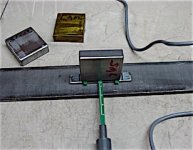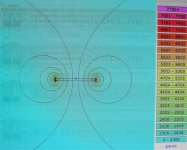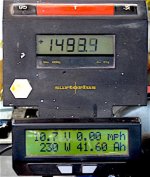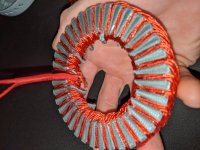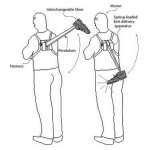APL
100 kW
- Joined
- Aug 6, 2018
- Messages
- 1,113
I made three identical blocks for the magnetic test,.. hope this is what we need. The SMC and steel cores are identical,
and the Lam core is very close. I know we don't need the lam., but it might be interesting anyway, and it's already made.
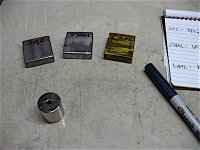
First, I weighed them, and then I did a simple test of through-flux, using a big 1 inch neo that I have. The gauss meter
probe is sensitive to where it's placed on the magnet, and will change dramatically in a small area, so I can only get
average numbers.
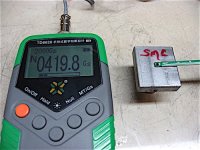
Weight; Steel- 105g SMC-88g Lam.-85g
Gauss through the top;
SMC- 420
Steel-365
Lam-730
Length;
SMC-850
Steel-830
Lam-650
Width;
SMC- 850
Steel-850
Lam-1250
Interesting, but doesn't really tell us too much, except that they're all pretty close, and the lam's appear to be better
at transferring flux along their length, or thin side, but not through the stack.
The coil test is what we really need, so I'll wind them up with some wire and go from there. Any ideas? I don't have
much for power supply's, so I was thinking maybe car battery, heavy wire, and some big resistors.
Start with a power up, and gauss test?
and the Lam core is very close. I know we don't need the lam., but it might be interesting anyway, and it's already made.

First, I weighed them, and then I did a simple test of through-flux, using a big 1 inch neo that I have. The gauss meter
probe is sensitive to where it's placed on the magnet, and will change dramatically in a small area, so I can only get
average numbers.

Weight; Steel- 105g SMC-88g Lam.-85g
Gauss through the top;
SMC- 420
Steel-365
Lam-730
Length;
SMC-850
Steel-830
Lam-650
Width;
SMC- 850
Steel-850
Lam-1250
Interesting, but doesn't really tell us too much, except that they're all pretty close, and the lam's appear to be better
at transferring flux along their length, or thin side, but not through the stack.
The coil test is what we really need, so I'll wind them up with some wire and go from there. Any ideas? I don't have
much for power supply's, so I was thinking maybe car battery, heavy wire, and some big resistors.
Start with a power up, and gauss test?


